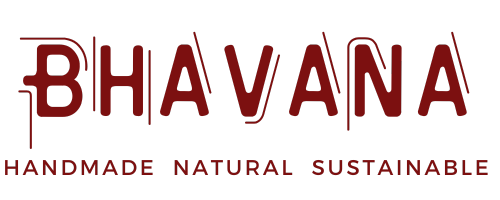Lucknow Chikankari Hand embroidery
Chikankari is a traditional embroidery style from Lucknow, India. It’s an urdu word which when translated means embroidery (using thread or wire). Lucknow Chikankari came to India as part of a culture of Persian nobles at the Mughal court. Chikan embroidery in India is about 400 years old and this Persian craft came to India with Noorjehan, the queen of Jahangir. This craft is quite distinctive in nature and forms an integral part of the life of Lucknow.

Chikan began as a type of white-on-white (or whitework) embroidery. White thread is embroidered on cool, pastel shades. Usually uses 6 strands of thread for a filled in look. This delicate hand embroidery is done on a variety of textile fabrics like cotton, chanderi, muslin, georgette, viscose, silk, organza, net, etc.

Nowadays Chikan embroidery is also done with colored and silk threads in colors to meet the fashion trends and keep chikankari up-to-date.

Lucknow Chikankari has more than 30 distinct embroidery stitches and patterns. We have grouped them into 10 different categories to illustrate the intricacies of this artful technique.
1 - Tepchi
Description: Running/ Darning stitch
Shape: Line
Application: Used as a basis for further stitchery, sometimes to form basic shapes
Variations: Pechni -Whipped running stitch; Balda - running stitch with dense couching

2 - Bakhiya
Description: Herringbone stitch is done on the reverse side and its shadow is visible on the Front side. This is a signature stitch of chikankari!
Shape: Leaf
Application: To create shadow effect
Variations: Dhoom Patti - Double herringbone; Maang Patti - Closed cretan stitch; Ghaas Patti / Chana Patti- ~ Fishbone stitch

3 - Hool
Description: Eyelet stitch made using six strands of yarn.
Shape: Circle
Application: To form center of a flower
Variations: Gitti - Circular buttonhole stitch; Kaaj - Linear blanket stitch

4 - Rahet
Description: Rahet is Stem stitch done with six strands of yarn on the reverse side; appears like back stitch on the front side.
Shape: Lines
Application: To form the stem of a flower design
Variations: Dohra Bakhiya - double line combines with shadow work; Pashni - stem stitch

5 - Zanjeera
Description: Chain stitch using a single strand of yarn.
Application: To form the final outline for leaf or other shapes

6 - Banarsi
Description: Roman stitch - This is a two stitch technique using six strands. A longer stitch is formed vertically and then a shorter stitch from the halfway point leaning horizontally.
Shape: Spikes
Application: Bijli - Buttonhole stitch in a teardrop/ bulb shape with Banarsi stitch all around; Chashm-e-bulbul - Hool with Banarsi stitch all around

7 - Jaali
Description: Lace/ Net effect with stitches - Pushing apart warp and weft yarns with needle forming tiny holes which are then firmed up with stitches.
Shape: Circle/ Oval/ straight line
Application: Hathkati Jali - row; Sidhaul Jali - oval

8 - Phanda & Murri
Description: French Knot & satin stitch
Shape: Murri - rice; Phanda - Millet
Application: To form center of a flower. Keel - Phanda with Banarsi all around; Kauri - Shell shaped; Keel Kangan & Meharki - Flower made with combination of Phanda and Murri
Variations: Gol murri - broader; Kacha Phanda - less dense; Dharhi phanda - with a short stem; Dhaniya Phanda - short stem on both sides

9 - Katau
Description: Applique work
Shape: Paisley or Flower
Application: Design is cut from different material and placed on the final fabric and stitched to secure it.

10 - Mukaish
Description: Embroidery with metal
Shape: Dots
Application: Mukaish work is a type of metal embroidery where thin metallic threads are twisted and sewn onto fabric to create patterns and designs. It's often combined with Chikankari embroidery style.

Process
The piece begins with one or more pattern blocks that are used to block-print a pattern on the ground fabric. The embroiderer stitches the pattern, and the finished piece is carefully washed to remove all traces of the printed pattern, the process of chikankari includes the following steps:
- Design
- Engraving
- Block printing
- Embroidery
- Washing and finishing

Signature Characteristics
Most of the embroidery stitches used in Chikankari exists around the world in various regions known for their hand crafts. What makes Lucknow Chikankari stand out is the specific and unique combinations of stitches used to create patterns that resonate with local, cultural symbolism. For example, Chashm-e-bulbul, Keel Kangan, Taj mahal etc. This, combined with its White/ Pastel signature colors and shadow effects using light, translucent fabrics makes Lucknow Chikankari special and sought after!

